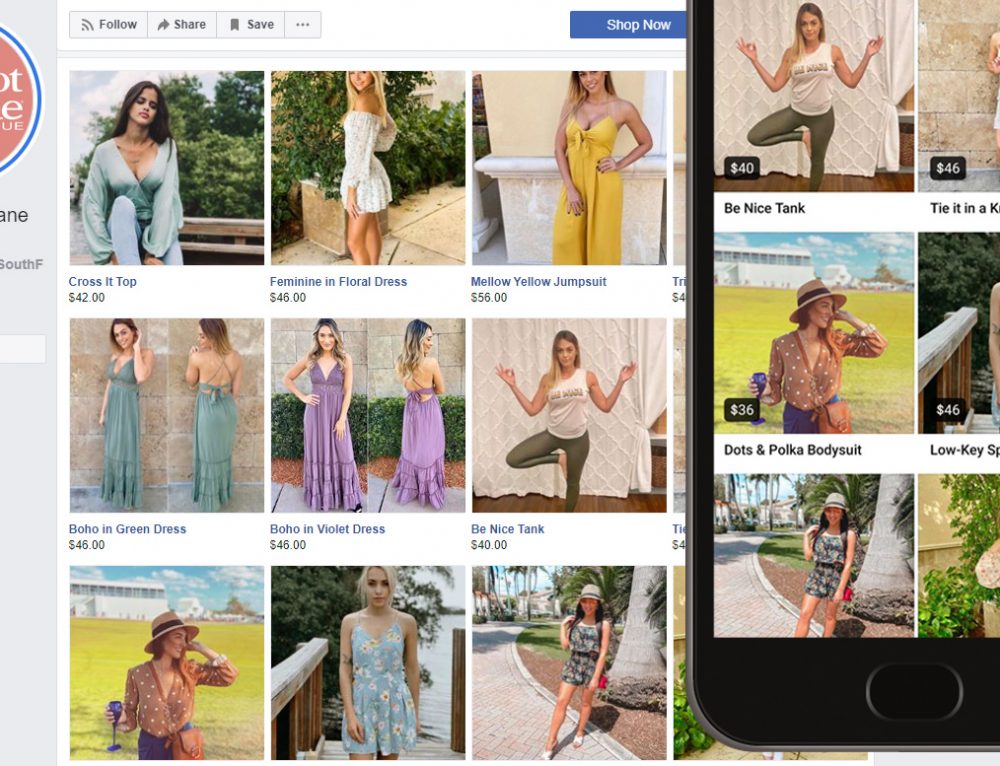
You don’t have to be a retail giant to make a killing online. While Amazon and other global brands take the lion’s share of e-commerce traffic and revenue, with more people than ever going to sites like https://www.cripto-valuta.net/de/investire/come-investire-200-euro-su-amazon/ to find out how they can invest in the company, there are plenty of local retailers making the internet work for them, too.
The key is to give customers the kind of retail experience they expect in the 21st century. This includes making sure everything behind the scenes is running smoothly so you can keep up the outward growth. Using resources like accounting firms in birmingham, for example, to keep on top of all finances going in and out will provide a strong base for your business to keep going and make that 21st century experience a very real one. That also means one in which you speak to them on every platform and through every channel. At first glance, this may seem impossible for local retailers. But put Google Shopping at the center of your sales strategy and suddenly an effective omni-channel presence is within reach.
An Omni-Channel Sales Strategy Is Essential for the Modern Consumer
Omni-channel marketing, where consumers are able to engage with brands on any platform and device, is common in the retail sector, writes Gabriel Shaoolian, founder of DesignRush.
“In this context, when retail brands create an omnichannel strategy, customers might begin shopping on their mobile device, add a product to their cart while on their tablet and complete the checkout process on their desktop without suffering any interruptions in the shopping experience,” he explains.
An omni-channel strategy goes beyond multi-channel marketing, says Francesca Nicasio at the retail blog Vend. They are not one and the same. Multi-channel marketing means making your brand available on several channels, but that doesn’t always equate to an omnichannel experience.
“Just because you have a website, a mobile app, and a physical store doesn’t necessarily mean that you’re an omnichannel retailer. To truly be one, you must fuse all those channels together, so they give customers a seamless experience,” she writes. Custom website development could be one of the first steps towards building an omnichannel experience. You could maintain a website without any hiccups with the assistance of developers, resulting in a smooth customer experience. Once this is going well, you may diversify your channels, allowing you a wider scope for the target audience.
It’s omni-channel strategies that have allowed many high street retailers in the UK to emerge from the digitalization of retail relatively unscathed, says Econsultancy’s Rebecca Sentance. That’s because by leveraging an omni-channel experience, brands recognize that today’s customer journeys are neither two-dimensional nor direct. A range of channels are used in the shopping experience and retailers must provide a seamless experience across them all if they are to survive.

Creating an Omni-Channel Presence Starts With Google Shopping
The idea of an omni-channel strategy may seem vast and unmanageable. And while having a mobile responsive website and an active social media presence are important parts of an omni-channel experience, Google Shopping should be your focus from the outset.
“If you’re wondering why you should invest in Google Shopping as a channel consider this: Google is the leader in search. You don’t “Bing” something when you don’t know the answer, you “Google” it,” says Eric Keating, vice president of marketing at Appcues. Ads can appear in both the shopping carousel and in the main listings meaning the size of your potential customer base is huge.
Even in an industry like retail that is dominated by Amazon, search engines like Google are still able to pull their weight. That’s according to research firm Survata, which found that 49 percent of consumers would turn to Amazon when looking for a product online compared to 36 percent to search engines. This is a sharp rise from a previous Survata study the year before, in which 55 percent of people would turn to Amazon first and just 28 percent to search engines.
In fact, search engines actually did better than Amazon when customers were at the research stage and didn’t have a specific product in mind. The same survey found that 46 percent of those consumers would start with search engines compared to 39 percent who would turn to Amazon.
Even if you don’t sell online, a Google presence is still extremely powerful for brick and mortar retailers, writes marketing consultant Pamela N. Danziger. Google is often the go-to place when people are looking for information about nearby businesses. “Four in five customers access local business information through search engines, with location, directions and hours of operation the primary information delivered up by Google in the Knowledge Panel,” she explains.
It’s not just that Google is the king of query, its shopping platform is also inherently omni-channel out of the box.
Search Engine Land’s Greg Sterling believes that the platform is both “highly personalized” and “channel agnostic.” Everyone’s Google Shopping home screens will look different because Google serves up recommendations based on consumers’ previous histories and purchases.
Discovery Ads, one of Google’s latest ad campaigns, takes omnichannel marketing even further, says Ginny Marvin, editor-in-chief at Third Door Media. These are “visual formats that run across YouTube home feed, Gmail and, for the first time, the Google Discover feed. And they are enabled through a new Discovery campaign type that – to build on the theme – are targeted with audiences, not keyword-based search intent targeting.”

Google Shopping Integrates Throughout the Funnel and Across Channels
For brands to have a true omni-channel strategy, they need to be reaching customers at every stage of the funnel. Here, Google Shopping succeeds again.
Traditionally, Google ads are known for driving high-intent traffic. Google Shopping ads are no different, writes Gerasimos Nikolopoulos, CEO of adaplo, an automated advertising solution for e-commerce stores. “Shoppers can see product details before clicking on it and if they go ahead and click then there are high chances for them to actually buy the product. They have already kind of “pre-approved” the combination of product-price-merchant so they go to the online store to learn more (see more pictures, check shipping details, etc) and ideally buy.”
But that doesn’t mean that they can’t be useful higher up the funnel.
Showcasing Shopping ads are one way to build brand awareness, says Matt Lawson, vice president of ads marketing for Google. These ads appear for more general product searches like “lighting” instead of “hand blown glass 3-light lantern,” for example, and allow brands to showcase a range of products.
Another way is to use Facebook ads to provoke brand searches on Google, says marketer Asi Dayan. WordStream has found that Facebook campaigns can lead to a 34 percent increase in people searching for your brand on Google.
However high intent the traffic from Google is, not everyone is going to purchase from your store straight away. “Remarketing is something that no merchant should go without,” says Anthony Capetola, marketing manager at e-commerce marketing platform Sales&Orders. Just like with traditional Google ad campaigns, Google Shopping allows retailers to target previous visitors and serve display ads to them across the web on any website that signs up to Google’s Display Ad Network. Campaigns are automatic and tailored to previous visitors.
Unlike other online shopping platforms – like Amazon – acquiring the customer isn’t the end of the story with Google Shopping. Digital marketer Bryan Falla points out that with Google Shopping, you own the customer after purchase. That means you can market to them in any way you like going forward.
Online Visitors Can Be Converted Into Foot Traffic
A true omni-channel experience isn’t just digital. A significant portion of customers still prefer to purchase products in-store and your sales strategy should reflect this. Once again, Google Shopping provides an invaluable way of reaching these customers through Local Inventory Ads.
“LIAs are a type of Google Shopping ad that lets retailers show real-time local inventory along with information like in-store availability and pricing,” writes DialogTech’s Louise Thompson. They allow customers to shop with confidence knowing that the store they are heading to has the product they want immediately available. They also offer a better customer experience by reducing friction, making the transition from online to offline almost seamless.
Further, Local Inventory Ads allow local stores to maximize a benefit they can offer customers that Amazon can’t, says Andy Taylor, director of research at marketing agency Merkle. That ability to get products immediately is something that even Amazon can’t match (yet) and it is important to make the most of it while retailers still can.
Promoting local inventory isn’t the only way that Google Shopping is helping to bridge the online-offline divide. Luxury Daily’s Sarah Ramirez writes that Google plans to promote click and collect services through its Shopping platform too, and is currently recruiting retailers for a beta program.
Images by: freestocks, Bench Accounting, Igor Miske





